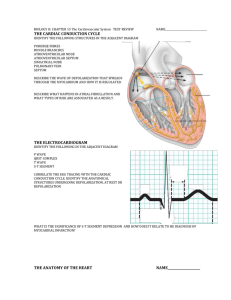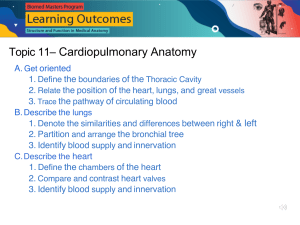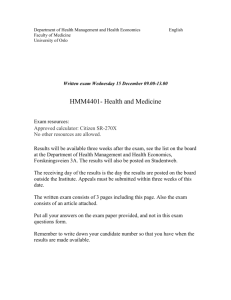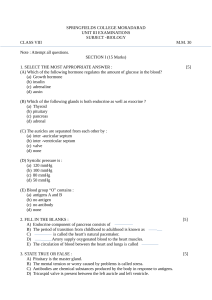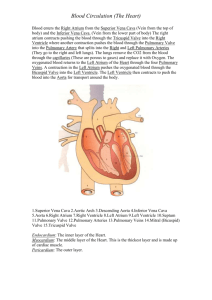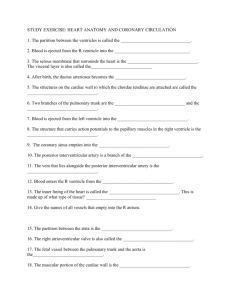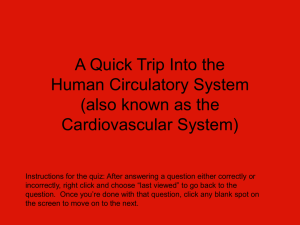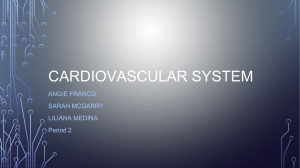Cardiovascular Study Guide
advertisement
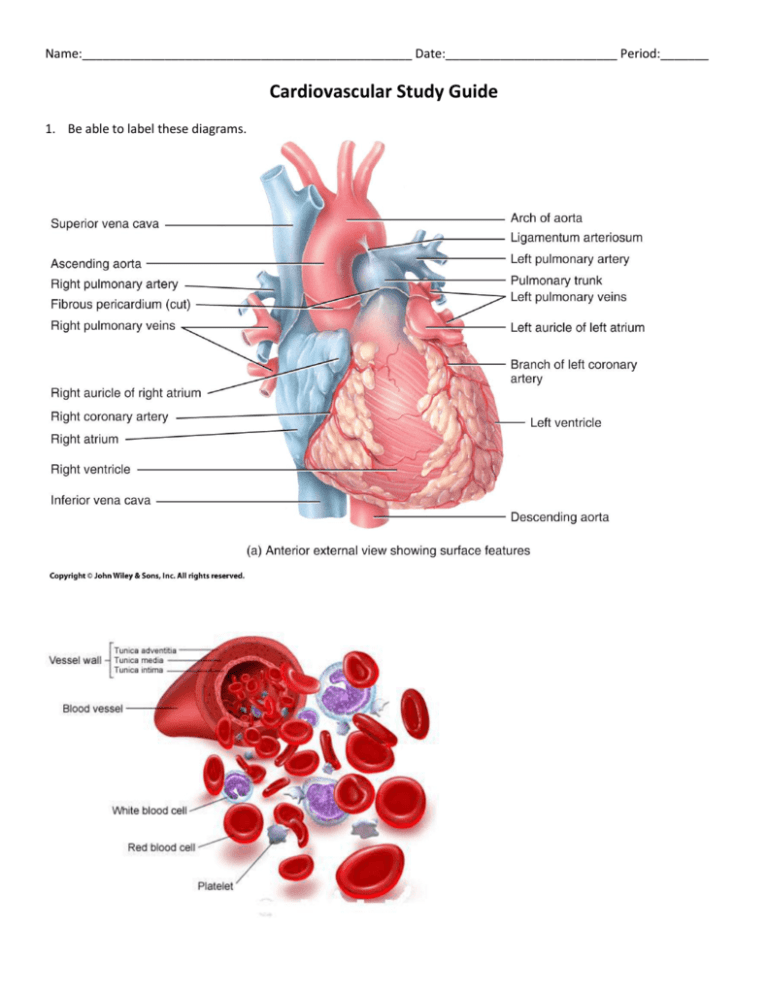
Name:________________________________________________ Date:_________________________ Period:_______ Cardiovascular Study Guide 1. Be able to label these diagrams. 2. 3. 4. 5. 6. 7. 8. 9. 10. 11. 12. 13. 14. 15. 16. 17. 18. Does the L and R Atrium and R and L Ventricle have Oxygenated or Deoxygenated blood. Do the following Aorta, Pulmonary artery, Pulmonary vein, Vena Cava carry Oxygenated or Deoxygenated blood. Where are the following located? Bicuspid/Mitral, Interatrial septum, Interventricular septum, Tricuspid Define the following: Trabeculae carneae, Papillary, Chordae tendineae What is the difference between Foramen ovale and Fossa ovalis? What is your blood made out of? What percent of each item? Put these in order from the heart, to the body, back to the heart: Venules, arterioles, arteries, veins, capillaries What are the functions of the blood? Know all about blood a. Who is the universal donor? b. Universal recipient? c. Has A antigens d. Has B Antigens e. Has A and B Antigens f. Has no antigens g. Has A antibodies h. Has B antibodies i. Has A and B antibodies j. Can receive blood from A, B, O, and AB Where is the Jugular artery? What is erythropoiesis What is the SA node? What is Thrombocytes Which artery do you use to measure blood pressure What is the difference between systolic and diastolic pressure? What is the normal blood pressure for adults? Which is thicker? (interarterial septum or interventricular septum) Here is a recap of what we just discussed. Blood from the body flows: to the superior and inferior vena cava, then to the right atrium through the tricuspid valve to the right ventricle through the pulmonic valve to the pulmonary artery to the lungs The blood picks up oxygen in the lungs, and then flows from the lungs: to the pulmonary veins to the left atrium through the mitral valve to the left ventricle through the aortic valve to the aorta to the body
